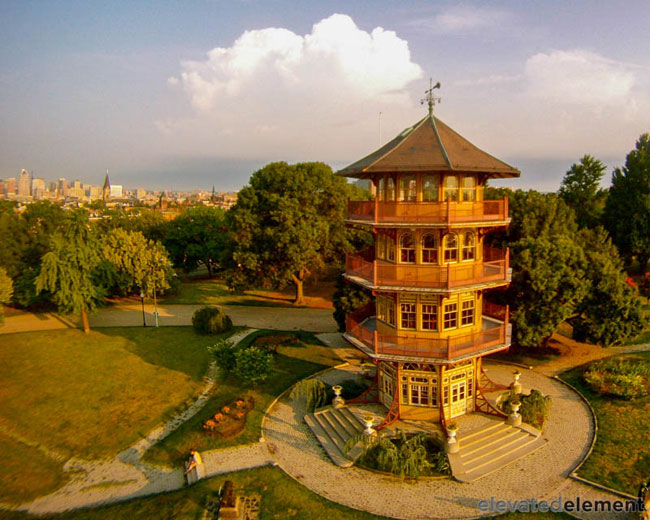The FBI once called Belinda and Terry Kilby, the drone-flying married couple Technical.ly Baltimore covered Wednesday, to see if they knew anything about the multi-copter flying by a downtown hotel, as the pair shared in a Q&A with the Baltimore Sun yesterday.
The Kilbys’ drone-art exhibit opening party is at the World Trade Center on Oct. 25 at 5:30 p.m. Admission is free.
What about that hotel flyby? From the Kilbys’ description, it sounds like the multi-copter that a hotel guest spotted was one being flown last week by a New Jersey-based company gathering film for a promotional tourism video about Baltimore city. But it does show that the Kilbys have built a name for themselves.
Read the full Q&A here, but we’ve excerpted a portion of what the Kilbys had to say about the safety of their activities and whether it’s legal for them to be piloting drones around the city.
On the safety of using aerial drones to take overhead shots of the city:
Safety is the number one concern for us. We really try to make sure this is as safe as possible, because let’s be honest, with anything that’s flying through the air that’s electronic like this, you’re really only one bad connection away from having some type of incident. … So there’s a lot that goes on behind the scenes to make sure it’s safe. The number one thing that we do is try to go places that aren’t occupied. Even though we may shoot subject matter that’s in the middle of the city, we’ll show up at 6 in the morning at first light.
On the rules governing how the Kilbys must fly their drones:
It’s basically less than 400 feet in altitude. We have to stay a minimum of three miles away from an airport. We personally try to stay five miles or further away. And you’re suppose[d] to stay away from large groups of people, and that’s really about it … It’s still kind of a grey area right now. According to the FAA, we’re allowed to do this but the second that we start charging people money for this, then there’s an issue with it.
On the above point, Technical.ly Baltimore will expound a bit more:
- The Federal Aviation Administration (FAA) does not need to give approval to hobbyists flying model aircraft for recreational purposes, so long as the aircraft are flown below 400 feet and a sufficient distance away from airports, populated areas and full-scale aircraft. (This is pretty straightforward, per the FAA rules listed on its website.)
- Flying for commercial purposes — that is, to accept money for video produced or photography taken via drone — is “breaking the law under FAA regulations.” Sort of. In 2007, the FAA, citing safety as its main reason, placed a ban on the commercial use of unmanned drones, but the ban isn’t enforced for hobbyists. This is the “grey area” the Kilbys describe in the Sun interview. Are drones “model aircraft,” or are they … drones? Do “commercial purposes” include selling prints of photography taken by drone in addition to payment in advance for photography taken by drone?
- The Kilbys are not paid to take their photos of Baltimore, although they do sell prints of their photography, as well as their new drone-art book. Terry Kilby told Technical.ly Baltimore, “As it stands now, we were never paid for any of those photographs and we are certainly not a profitable business entity.”
- The FAA plans to release in 2015 a set of regulations circumscribing commercial operations by drone-flying hobbyists. But as Wired.com notes, “The FAA has issued dozens of cease-and-desist letters to operators of commercial model aircraft, forcing some companies to shut down.” Still, other companies, either in secret or in the open, continue to operate unimpeded.







